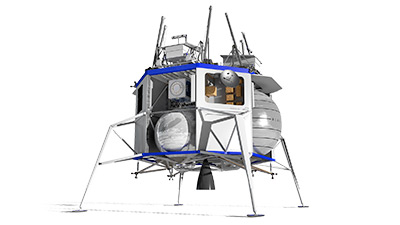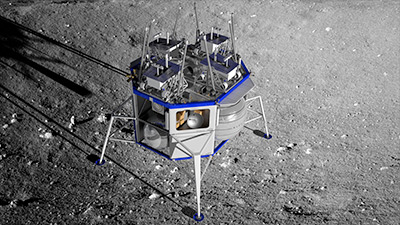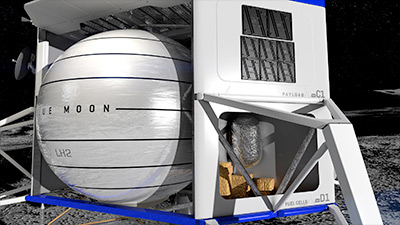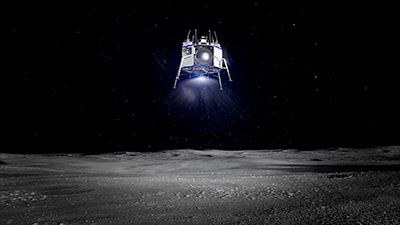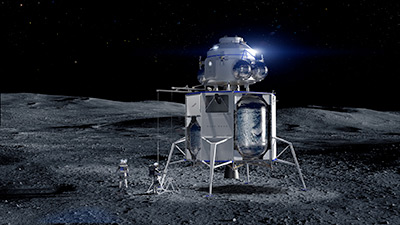Blue Origin BE-7 Engine Testing Further Demonstrates Capability to Land on the MoonBlue Origin's BE-7 engine program continues its testing at NASA Marshall Space Flight Center. This week, the program accomplished the fourth thrust chamber test of its high-efficiency engine. The hotfire testing further validates the engine that will power Blue Origin's National Team Human Landing System (HLS) in support of NASA's Artemis program.
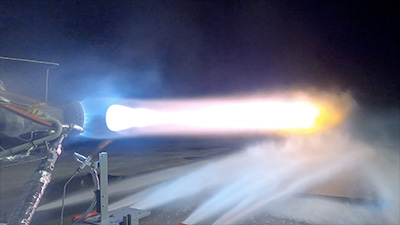
Above: A photo from the fourth trust chamber test of the BE-7 engine at NASA Marshall, which lasted 10 seconds.
So far in this recent campaign, the thrust chamber was tested for a duration of 20 seconds. This brings the cumulative testing time on the BE-7 thrust chamber to 1,245 seconds. The BE-7 is a high-performance, additively manufactured liquid oxygen/liquid hydrogen lunar landing engine with 10,000 lbf of thrust – throttling down to 2,000 lbf of thrust for a precise landing on the Moon.
"This thrust chamber test measured the ability to extract energy out of the hydrogen and oxygen cooled combustor segments that power the engine's turbopumps – the key to achieving high engine performance," said John Vilja, senior vice president, Engines, Blue Origin. "The high specific impulse, deep throttling, and restart capabilities of the BE-7 make it the ideal engine for large lunar payload transport as well as many other in-space applications. Thanks to the NASA Marshall Space Flight Center team for their support in this testing. We value this partnership and are looking forward to more test campaigns with them."
Within the National Team's Human Landing System architecture, the BE-7 is used on both the Descent Element and Transfer Element.
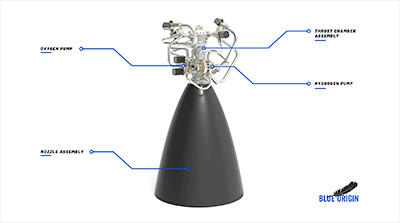
Above: BE-7 is an additively manufactured, high-performance, dual-expander cycle engine, generating 40 kN (10,000 lbf) trust.
"The BE-7, a turbomachinery-based engine using the most efficient propellants, is optimal for deep-space maneuvers and landing on the Moon," said Brent Sherwood, vice president, Advanced Development Programs, Blue Origin. "Our engine test series is steadily maturing what's needed to get Americans safely on the lunar surface as soon as possible. We are positioning to use the Moon's ice resources for rocket propellant, which will make exploration sustainable and open the Moon for commerce."
Developed privately over several years, the BE-7 is the latest high-performance engine in the Blue Origin family, building upon the demonstrated success of the BE-3 PM hydrogen/oxygen engine that powers the New Shepard vehicle.











